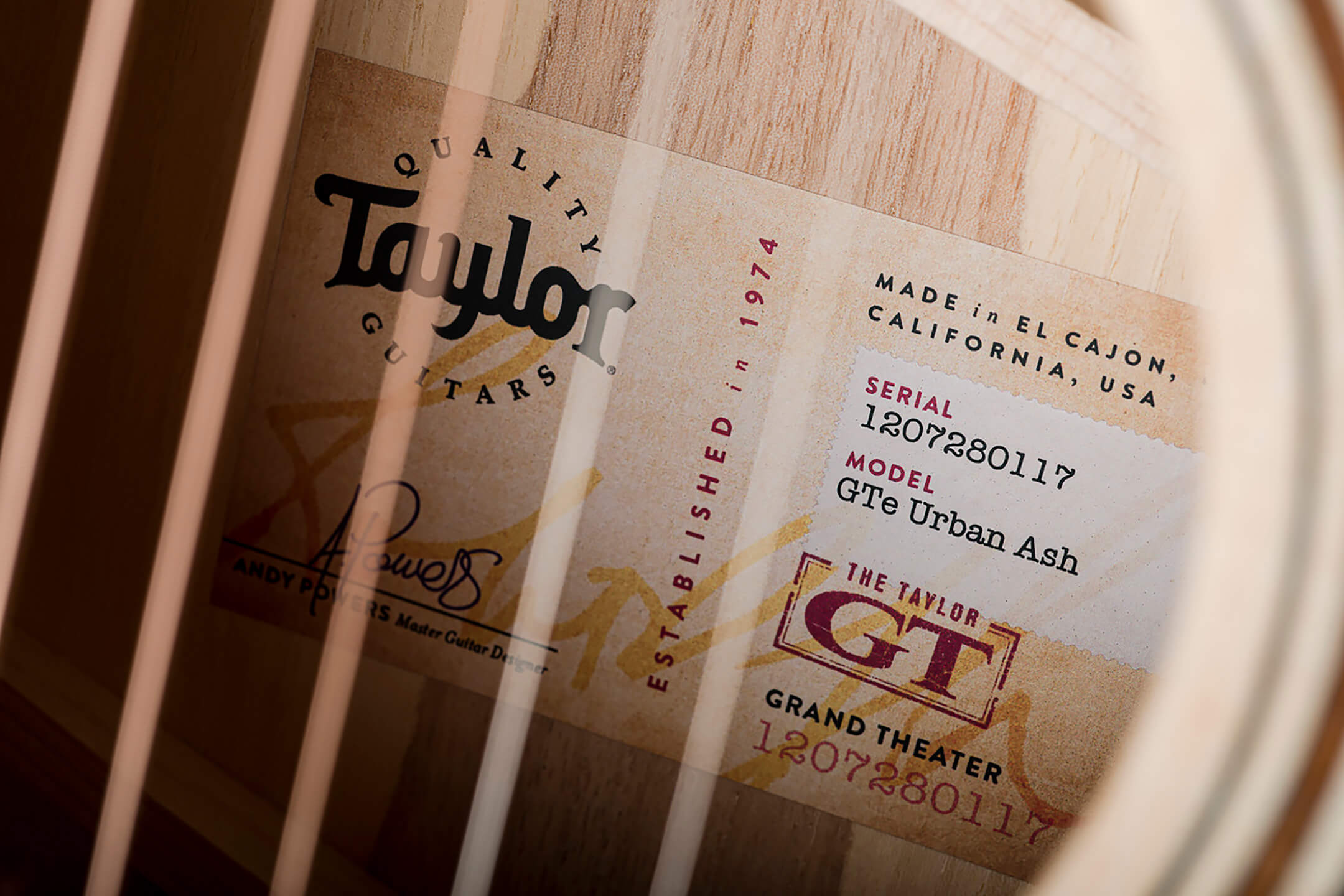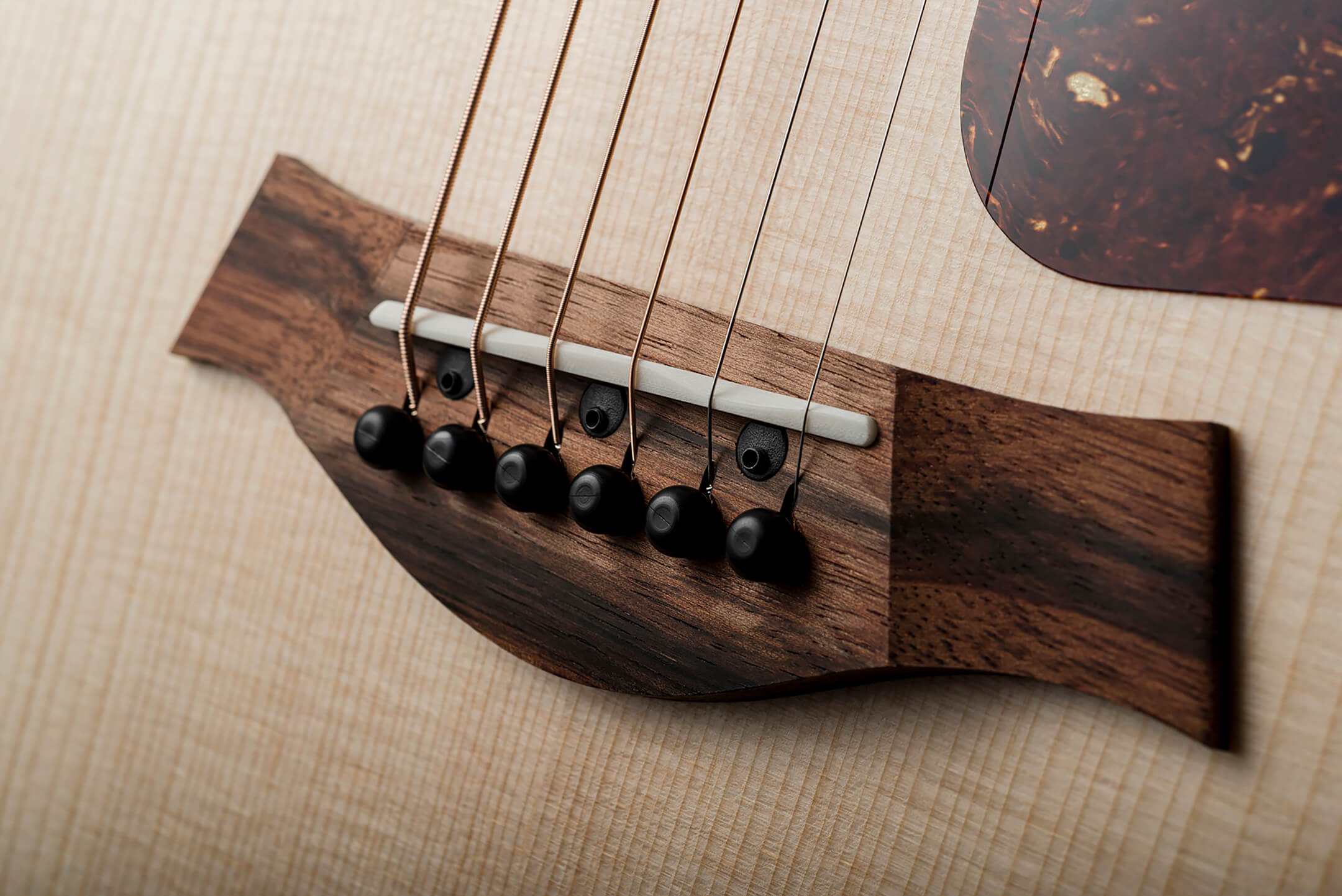Related Tags
“We needed a little bit of acoustic trickery”: Taylor’s Andy Powers shares the secrets behind the new GT model
The new GT body shape offers a ‘best of both worlds’ option that blends the convenience of a travel acoustic with the broader sound of a full-sized instrument. Here’s how Taylor’s guitar master guitar designer Andy Powers pulled it off…

Since he joined the company back in 2011, Taylor Guitars’ master guitar designer Andy Powers has been the driving force that has reshaped and refined the Californian guitar company’s already hugely successful range, while also bringing boundary-pushing innovation to a sector of the guitar industry that in the mainstream at least, remains broadly focused on looking back and recapturing old glories.
In recent years we’ve seen Powers reinvent the internal architecture of the flat-top acoustic with the revolutionary V-Class bracing, introduce an elegant new round-shouldered dreadnought into the catalogue in the shape of the vintage-flavoured Grand Pacific, bring innovation to the budget end of the market with the Academy Series and much more besides. So important has Powers’ contribution been to the brand since he joined, he even joined founders Kurt Listug and Bob Taylor as the company’s third partner in 2019.
Given Powers’ inclination to do the unconventional, it’s no surprise that his next project was something the company had never tried before – an acoustic that offered the portability and convenience of a travel acoustic with the more widescreen and versatile sounds of a full-bodied instrument. Seems like it would be too good to be true, but the proof is in the playing of the brand new GT model, which we described as “an innovative and hugely enjoyable instrument” in our recent review.

So how did Taylor do it? Well, a big part of the recipe is two things that might not be obvious to the naked eye – the new C-Class bracing inside the instrument, and the unconventional 24.125”/613mm scale length. We spoke to the man himself to find out how he engineered this GT series to do the impossible.
“The string length is a foundational design choice,” Powers explains of the GT’s unconventional scale. “I wanted a scale length that’s a little smaller. It’s actually a really easy-to-understand scale length. A lot of players, myself included, will sometimes drop-tune E flat to E flat. The strings are a little slinkier. I like that feel when I play, but I don’t necessarily want it to play E flat to E flat. I want it at concert pitch.
“So I took a more typical scale length – 25.5 inches – drop-tuned it and put a capo at the first fret. That’s what this scale length is. It’s not a travel-scale guitar but it’s certainly a bit shorter than you’re accustomed to. You have less string tension, so every note you play feels slinkier, and it actually feels like you’ve gauged down a set of strings but you still have the volume, power and punch out of a larger string. You don’t have as much space between frets, so some of those complicated chords become easier to play.”
Another key innovation is the new bracing pattern, which builds on what Powers did with the remarkable V-Class bracing to make something altogether different.

“I love the V-Class guitars. I love how that design works. You can think of this design as a variant of that,” he explains. “But really it’s just borrowing some of the same concepts, the same foundational-level qualities that we build into the V-Class are applied here. Those physics are what they are. You have a need for stiffness parallel to the strings that contributes to a long sustaining note, you have a need for flexibility – that’s what creates volume. In this case, the body is smaller, which means there’s a unique challenge in getting the response uniform over the register.
“We needed a little bit of acoustic trickery so the whole thing would end up somewhat balanced. I needed a deliberately asymmetrical sonic response to make this body sound the way I wanted it to, so I wanted to build a deliberately asymmetrical bracing architecture that could deliver that.

“This is a different design based on a single cantilevered beam if you want to talk about it in engineering terms. But the reality is – picture a diving board. I wanted to use that basic design to enhance the low-end response of this guitar, while still delivering the intonation aspects that I love about the V-Class design: the volume and the upper-register linear response. It’s a different mechanism to exaggerate the low-end response of a relatively small guitar.”
Find out more about the new Taylor GT at taylorguitars.com.
